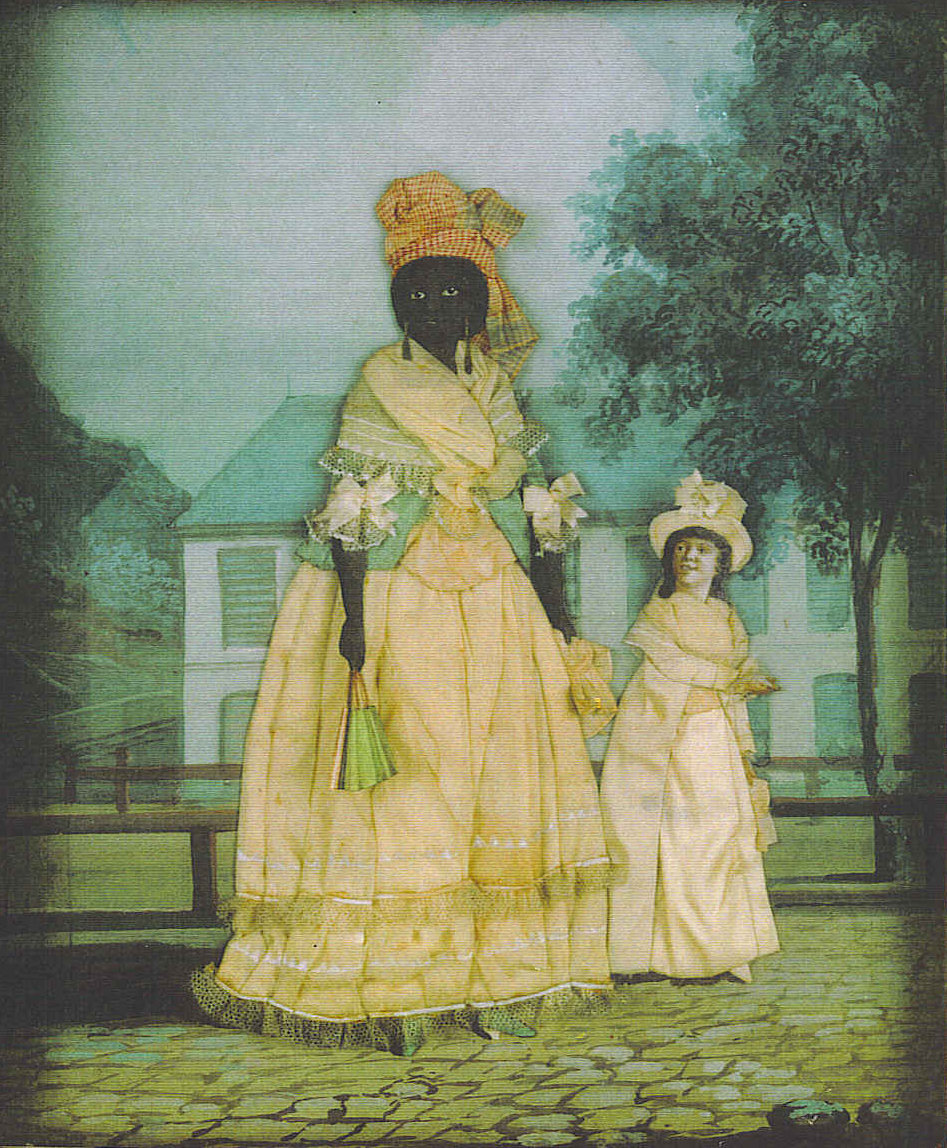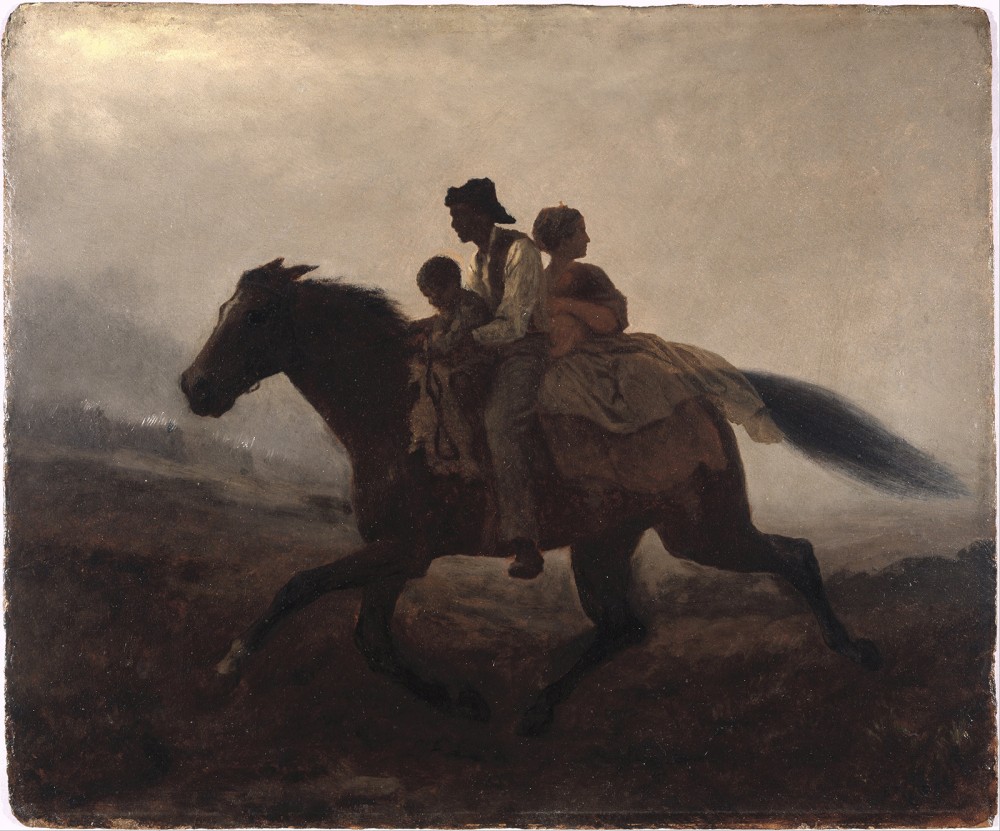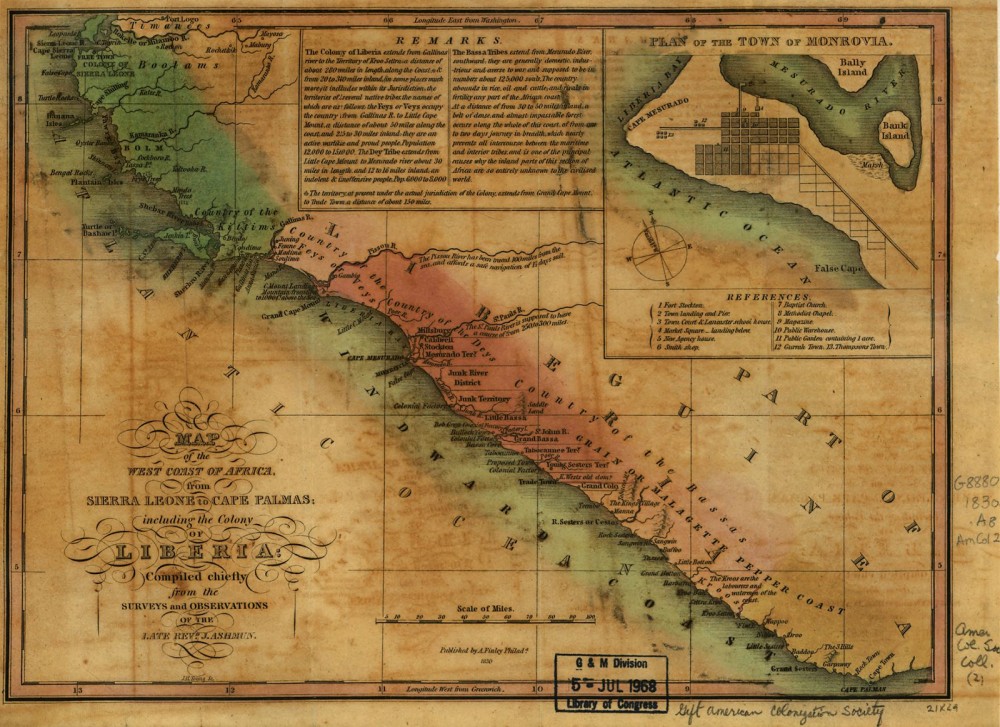36 Migration and Geographies
Urban growth remained tempered in the American South throughout the colonial period, but several key cities did emerge in correlation with the expansion of staple, or cash crop, agriculture. Towns provided central points for new capital investment and places where the English government could exert its control. The early establishment of towns remained tied to the needs of growing plantation economies. Towns were predominantly located along rivers or seaports.
Tobacco production in the Chesapeake region failed to justify urban sites to facilitate export in the seventeenth century, The development of the wheat trade, however, required centralized marketing and storage, which eventually resulted in the development of Baltimore, Richmond, and Fredericksburg. During the colonial period, Charleston also emerged as an important trade capital as thousands of slaves demanded by the growing plantation economy of the lower South entered the port and a variety of goods required by the planters of the West Indies were sent southward. However, urban growth accelerated greatly with the rise in rice cultivation, which required similar marketing, processing, and storage as wheat. By 1775, Charleston represented the largest city in the South and the fourth largest city in British North America, behind Philadelphia, New York, and Boston. In addition to their key role in trade, the older seaport cities of the South like Charleston and Savannah played an important roles as points of escape for wealthier members of the planter class. During the hotter months, cities posed a welcome sanctuary from the ravages of common diseases, including yellow fever and malaria, but during the winter and early spring, a different sort of “season,” emerged; the city became the cornerstone of social and intellectual life in the South as a variety of balls and events annually entertained city residents.
New Orleans rose to prominence as the cotton trade developed, surpassing Charleston by 1830 to become the definitive urban capital of the South. The Crescent City became home to the nation’s largest slave market and exported more cotton than any other American port, which for several decades before the Civil War allowed it to rival New York for the most important export port in the United States. By 1860, New Orleans was the sixth largest city in the country and boasted a population of 169,000 souls, while Charleston claimed a population one quarter of that size, placing it outside of the twenty largest cities. Eventually, Mobile, Memphis, and smaller towns like Natchez would also dot the cotton belt, fueling the plantation economy through the trade of slaves, manufactured goods, and cotton.
Southern cities differed from northern cities in several important ways. A significant number of slaves could be found in every southern city. By 1860, slaves comprised more than 20 percent of the urban population of the South’s major cities, and in certain cities, the proportion could be much higher. When Fredrika Bremer visited Charleston in 1850, she could clearly see that blacks outnumbered the city’s white inhabitants: “Negroes swarm the streets. Two-thirds of the people one sees in town are negroes.” Free African Americans also gravitated towards cities in great numbers because they were afforded greater economic opportunities and ultimately were able to develop their own rich, independent religious communities and social organizations. Free people of color in New Orleans—or gens du couleur as they were called in French—accumulated significant property and wealth, and benefited from associations with whites fostered by the French and Spanish influences unique to Louisiana.

Enslaved and free African Americans performed a myriad of skilled and unskilled jobs vital to the economy of the city. Women served primarily as domestics, and men worked in a variety of trades relating to local and export commerce, construction, and industry. Day laborers transported goods to ships for export, whereas a variety of slave mechanics or artisans constructed ships or buildings as carpenters, or worked as wheelwrights, cabinetmakers, or in a variety of other fields. The great demand for short-term labor in cities gave rise to the practice of slave hiring. Masters would arrange either for their slaves to work for an employer, creating a contract for predetermined wages that would typically last between one month and one year, or would allow the slave to find employment with the understanding that he or she would pay a pre-arranged sum on a weekly or monthly basis for the privilege of “hiring out.” In some cities, like Charleston, Savannah, and New Orleans, city governments required these slaves who were hired out by the day to wear badges and regulated the wages they would be compensated for specific jobs.
During the nineteenth century, urban growth accelerated in the South, although most cities retained a lighter population density than their northern counterparts primarily due to the continued preeminence of the rural economy. Although most Southern cities resisted the forces of industrialization during the antebellum period, in a handful of cities—including Richmond, Baltimore, New Orleans, and Mobile—small-scale industry did dominate the economy. Industries in these cities that centered on shipbuilding and the manufacturing of iron, chemicals, textiles, and other goods employed whites as well as free and enslaved blacks. The growth of these urban industries also further diversified the population of Southern cities as they attracted significant populations of British, Irish and German immigrants who otherwise settled outside of the South.
As far back as the Colonial period, Irish immigrants had found the South to be a hospitable place of settlement. In 1765, Ulster-born immigrant and Native American trader John Rea wrote home to Belfast, in the hopes of recruiting Irish settlers to populate his new Queensborough township in Georgia. He promised immigrants 100 acres of land per family, domestic animals and farming supplies. Above all, he guaranteed that their lives the South would be better than in Europe. Rea boasted to his Belfast readers, “I keep as plentiful a table as most gentlemen in Ireland, with good punch, wine, and beer.”
The social and cultural lives of Irish men and women varied based on the region in North America in which they settled. Many migrants moved to and lived in northern cities, particularly after the famines of the 1840s, but the American South also attracted sizable populations of Irish settlers starting in the colonial period. Indentured servants signed contracts for seven years’ labor as payment for travel costs, and often served as initial laborers on cotton plantations prior to the height of the slave trade.. Irish traders, like George Galphin, exchanged goods and created families with regional Native Americans well into the 1700s. Immigrants became planters, slaveholders, merchants and businessmen in bustling southern seaports like Charleston, New Orleans and Savannah.
Early settlers came from all regions in Ireland, and they represented both Catholic and Protestant denominations. Some large communities, like the Scots Irish, settled in family groups in the western Carolinas, Kentucky and Tennessee before 1800. Many migrated as entrepreneurs, and they often socialized with their non-Irish neighbors professionally and personally.
The ready availability of slaves in the South presented immigrants with strong labor competition. In the decades after the 1845 Potato Famine in particular, those seeking opportunities in the United States were poor Irish migrants—especially Catholics—who sought skilled and unskilled employment that placed them in direct competition with slaves. As a result, fewer immigrants moved to the South. By 1860, in fact, only 11 percent (or 200,000 persons) of the 1.6 million Irish persons living in the United States resided in the southern states.
A majority of these immigrants settled in regional urban centers, like Charleston, Mobile, Natchez, New Orleans and Savannah. There, they made a major impact on developing infrastructure, especially by laboring on canals and railroads meant to improve trade efficiency. This work was unpleasant and arduous, and the fact that southerners used Irish settlers for dangerous labor they would not even have slaves do earned them nicknames like “black” and “smoked.” New immigrants were aware that such work fostered an association with slaves, and many tried to distinguish themselves publically from African-Americans. Consequently, Irishmen and women often supported the racial distinctions undergirding slave society in the Old South, even as men like Daniel O’Connell linked support for abolitionism to Irish nationalism during the 1830s. Later Irish settlers in the Old South later became more socially and culturally “Irish” than their southern predecessors as they settled increasingly in ethnocentric neighborhoods and churches.
Caribbean influences joined with European traditions in crafting the unique culture of the Old South. This connection is particularly clear in the development of southern food. For instance, New Orleans’ Creole cuisine, was heavily influenced by Caribbean, West African, European, and American Indian culinary traditions. New Orleans and colonial Haiti, in particular, had an intimately connected history. Following the Haitian Revolution, an estimated 10,000 free and enslaved Haitians came to New Orleans, nearly doubling city’s population. The strong cultural continuities between the two cultures reinforced the preexisting creolized cultures of Louisiana that arose from French and Spanish influences.
The South drew fewer immigrants than did the North, but antebellum southern culture nonetheless reflected the diverse people who came to understand the region as their home.
Just as new southerners were arriving, others were leaving. Escaped slaves sought refuge in the northern states, and then later in Canada, while other African Americans looked across the ocean for a place to start a new life. The South was intimately connected to the wider world through migrations, both free and forced, as well as economic relationships, and cultural ties.

The American Colonization Society (ACS) was founded in 1816 with the purpose of raising money to send manumitted slaves to West Africa. The idea of sending African Americans to Africa had been pioneered decades earlier by the British who established a colony in Sierra Leone. Some members of the ACS, like the Reverend Robert Finely, opposed slavery for religious reasons and also believed that Liberia could serve as an outpost for spreading Christianity to indigenous peoples. The ACS also received support from white politicians, like Senator Henry Clay, who believed that colonization could atone for the evils of slavery. Many slaveholders believed that freed slaves endangered the institution of slavery, and therefore removing former slaves from the states, allowed slaveholders to manumit their slaves without such danger.
In 1819, the small island called “Providence Island” was purchased for the use of the African American colonists. The settlement was later named “Monrovia” in honor of American president and ACS supporter James Monroe (1817-1825). The first colonists arrived one year later, and over the course of the nineteenth century, more than 19,000 African Americans settled in Liberia. Many colonists died from disease—particularly malaria—and famine. Indigenous Africans, including Dey and Grebo peoples, viewed colonists as intruders and occupiers. Wars between the colonists and native peoples continued throughout the nineteenth century. Many African Americans were suspicious of the ACS’ intentions in sending them to a far-off land, and reports of the colony’s troubles increased that doubt. David Walker’s echoed the sentiments of many other free African Americans in his famous Appeal when he asked, “[w]hy should they send us into a far country to die?”
Liberia did offer formerly enslaved African Americans opportunities for success. Lott Cary, who was born a slave in Virginia, eventually purchased his freedom and migrated to Liberia as one of the first American missionaries to be sent abroad. He established the colony’s first church, Providence Baptist. African American newspaperman, John Brown Russwurm, operated the colony’s first printing press, publishing the monthlyLiberia Herald. Other colonists, like Matilda Lomax, used freedom to educate their children, something they would not have been legally allowed to do in the South.

The ACS maintained control of Liberia and appointed the colony’s political officials until 1847. White supporters of the ACS and other societies continued to provide the money and goods necessary for the passage to Liberia. White men and women aided with establishing schools, missionary outposts, and trading entrepôts in Liberia.
Freed African Americans exhibited mixed feelings concerning emigration. In 1787, Prince Hall petitioned the Massachusetts General Court to provide support for the repatriation of African Americans to Africa but was ultimately rebuffed. Hall later worked to organize emigration to Haiti. Paul Cuffee, a black sailor and successful merchant organized the earliest successful effort to resettle in Africa. In 1815 he brought thirty-four settlers to Sierra Leone on one of his own ships. Although Cuffe understood emigration as a way to leave behind American racism, his significant personal and financial investment in emigration was rooted in his desire to establish a global trade route.
Most African Americans opposed colonization, preferring to remain in the United States, in part because emigration would mean abandoning enslaved family members. Opposition to the ACS among African Americans became more pronounced in the 1830s, guided by fears that the ACS would eventually support forced colonization. But emigration was still an attractive option for many, so several thousand African Americans organized alternate missions and settled in Haiti and Canada. Those projects stalled by the end of the 1830s, but during the 1820s, 1830s and 1850s, the Haitian government actively recruited African Americans, offering plots of land and funds for resettlement.
The passage of the Fugitive Slave Law (1850) and the Supreme Court’s Dred Scott decision (1857) revived interest in emigration and colonization. In 1858, the Philadelphia minister Henry Highland Garnet formed the African Civilization Society, which emphasized black self-determination and the conversion of Africans to Christianity while repudiating American racism. Martin Delany later joined forces with Garnet, although both men had vigorously opposed colonization only a few years earlier. Hostility towards colonization remained strong in the African American community until the end of slavery. At its heart, the debate over emigration raised questions about whether Africa ought to be lauded as the homeland of blacks in the United States or whether claims to freedom and equality in the United States that remained unmet were enough to claim an American identity.

